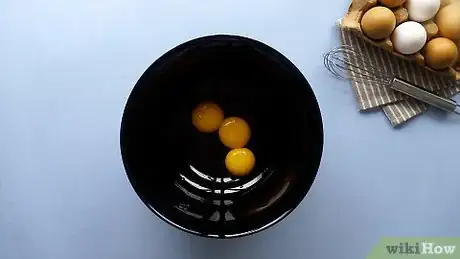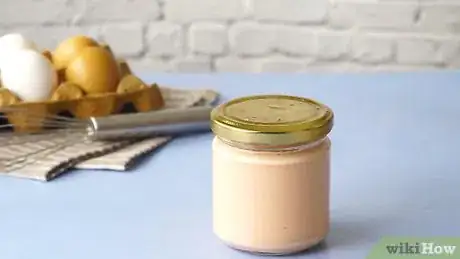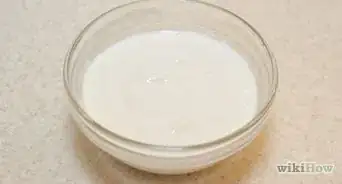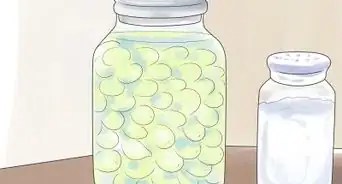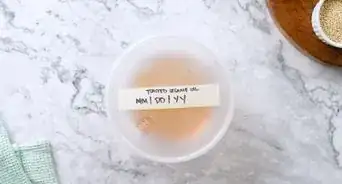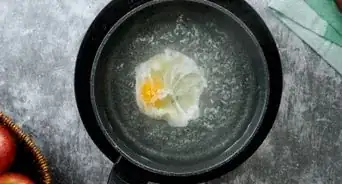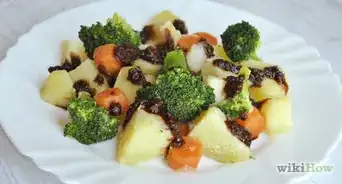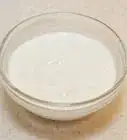This article was co-authored by Jennifer Levasseur. Chef Jennifer Levasseur is a Personal Chef and the Owner of The Happy Cuisiniere based in Breckenridge, Colorado. She has over 12 years of culinary experience and specializes in Mountain and Contemporary Rustic cuisine. Moreover, she can craft dishes and modify menus to accommodate dietary restrictions, such as gluten-free, vegetarian, vegan, pescatarian, and dairy-free diets. In addition to a Bachelor’s degree in Marketing and Management from the University of Houston, Chef Jennifer holds Associate’s degrees in Culinary Arts and Baking & Pastry Arts from Houston Community College.
There are 10 references cited in this article, which can be found at the bottom of the page.
wikiHow marks an article as reader-approved once it receives enough positive feedback. In this case, 90% of readers who voted found the article helpful, earning it our reader-approved status.
This article has been viewed 1,010,677 times.
Mayonnaise has become so over-processed that most of us can't imagine it being made from scratch. But it can be done. Homemade mayonnaise is tastier, healthier, and more rewarding than store-bought mayonnaise, and once you get the knack of it, making mayonnaise is a snap.
Ingredients
Method 1:
- 3 egg yolks
- 2 tablespoons white wine vinegar
- 2 tablespoons lemon juice
- 2 tablespoons water
- 1 teaspoon salt
- 1-1/2 cups vegetable oil
Method 2:
Makes about 1 3/4 cups
- 3 egg yolks, room temperature
- Pinch dry mustard
- 1/2 teaspoon salt (or to taste)
- 310ml/10 fl oz/ 1 1/4 cups olive oil, room temperature
- 1/2 teaspoon tarragon vinegar
Steps
White wine vinegar mayonnaise
-
1Separate the eggs, putting only the yolks in a mixing bowl.[1]
- Crack your eggs in a bowl and scoop up the yolks one at a time in your hands. Then, separate your fingers so the white will drop back into the bowl.
-
2Add vinegar, lemon juice and water.Advertisement
-
3Optional; heat the mixture in a double boiler to a temperature of 150º (65.6C). This will take about 1 minute. Stir constantly and keep a close eye on the temperature. Many people don't bother with heating, but it's essential to minimize the risk of food poisoning (salmonella - see Warnings).
-
4Remove the mixture from heat and cool to room temperature.
-
5Add dry mustard, salt, and cayenne pepper.
-
6
-
7Slowly, very slowly, teaspoon by teaspoon at first, whisk in an oil that you don't mind tasting (extra virgin olive oil, or peanut or grape seed,or corn oil, rather than an old, super-cheap container of canola you haven't touched in years).
- If using a stand-alone mixer, pour the oil in drop by drop.
- If using a hand-held or electric whisk, it might be helpful to have someone pour for you, or at least to have something holding your mixing bowl steady as you whisk.
-
8Continue adding oil bit by bit until the mayonnaise has reached the proper consistency. This may take up to a half a cup of oil per yolk. If the mayonnaise remains soupy, give it a chance to rest.[3] If in resting the oil and yolk seem to separate, the mayonnaise has broken. See Tips.
-
9Store mayonnaise sealed in the refrigerator for up to three days. It contains raw eggs, so while it is quite unlikely that keeping it for longer will prove detrimental to your health, you shouldn't tempt fate.
Tarragon vinegar mayonnaise
-
1Pour the egg yolks into a bowl. Add mustard and salt. Mix to combine.
-
2Add the olive oil gradually. Add drop by drop, stirring constantly. Make sure that each oil drop has been properly absorbed before adding the next drop. Once you notice the egg yolks thickening, the oil can be added in a thin stream. However, do not add the last third of oil until next.
-
3Add the tarragon vinegar. Add it drop by drop and alternate with the remaining third of the oil. Continue until the vinegar has been added.
-
4Pour in any remaining oil. Once again, do this slowly and by drops. Stir constantly.
-
5Pour the mayonnaise into a suitable container. Cover and refrigerate.
- The mayonnaise can be stored for up to 5 days in an airtight container in the refrigerator. Do not leave out for more than an hour during use, especially in hot weather.
Community Q&A
-
QuestionHow can I make mayonnaise last longer?
 Community AnswerCover the top and make sure it's airtight. Keep it in the fridge.
Community AnswerCover the top and make sure it's airtight. Keep it in the fridge. -
QuestionCan I add yogurt to the mayonnaise?
 Community AnswerNo. It will curdle.
Community AnswerNo. It will curdle. -
QuestionCan I use olive oil to make mayonnaise and if so, how much do I use?
 Community AnswerYou can use olive oil to make mayonnaise. Just pour the oil in slowly while whisking and stop adding oil once you've reached your desired thickness. If it seems too runny, just add in an egg yolk and whisk.
Community AnswerYou can use olive oil to make mayonnaise. Just pour the oil in slowly while whisking and stop adding oil once you've reached your desired thickness. If it seems too runny, just add in an egg yolk and whisk.
Warnings
- Because you are using raw egg yolk, care should be taken to avoid food poisoning from Salmonella.[8] Don't alter the proportions of ingredients unless they are listed as optional, because the acidity is there for a reason--food safety.[9] The recipe presented here is based on U.S. Food and Drug Administration guidelines (see External Links).⧼thumbs_response⧽
- Pregnant women are advised not to eat 'real' mayonnaise due to the aforementioned Salmonella risk from the raw eggs.[10]⧼thumbs_response⧽
Things You'll Need
- Bowl
- Mixer (and or electric), whisk
- Suitable storage container with lid
References
- ↑ https://www.epicurious.com/recipes/food/views/mayonnaise-241083
- ↑ https://www.theguardian.com/lifeandstyle/wordofmouth/2010/jul/01/how-to-make-perfect-mayonnaise
- ↑ https://www.foodnetwork.com/recipes/alton-brown/mayonnaise-recipe-1951119
- ↑ http://dish.allrecipes.com/making-mayonnaise/
- ↑ https://www.allrecipes.com/recipe/205070/egg-white-mayonnaise/
- ↑ https://www.thekitchn.com/homemade-mayonnaise-separated-140473
- ↑ https://www.ncbi.nlm.nih.gov/pmc/articles/PMC4377917/
- ↑ https://www.cdc.gov/salmonella/general/prevention.html
- ↑ https://www.foodsafety.gov/poisoning/causes/bacteriaviruses/salmonella/index.html
About This Article
To make mayonnaise, you'll need 3 eggs, lemon juice, white vinegar, and some high-quality olive or vegetable oil. Crack the eggs and separate the yolks from the whites, putting the yolks in a heat-safe mixing bowl. To the yolks, add 2 tbsp of white vinegar, 2 tbsp of lemon juice, and 2 tbsp of water and then mix well. To reduce the risk of salmonella food poisoning, double boil this mixture for about 1 minute. Then, slowly add in 1 cup of vegetable or olive oil while mixing constantly. For a tarragon vinegar mayonnaise recipe, scroll down!
